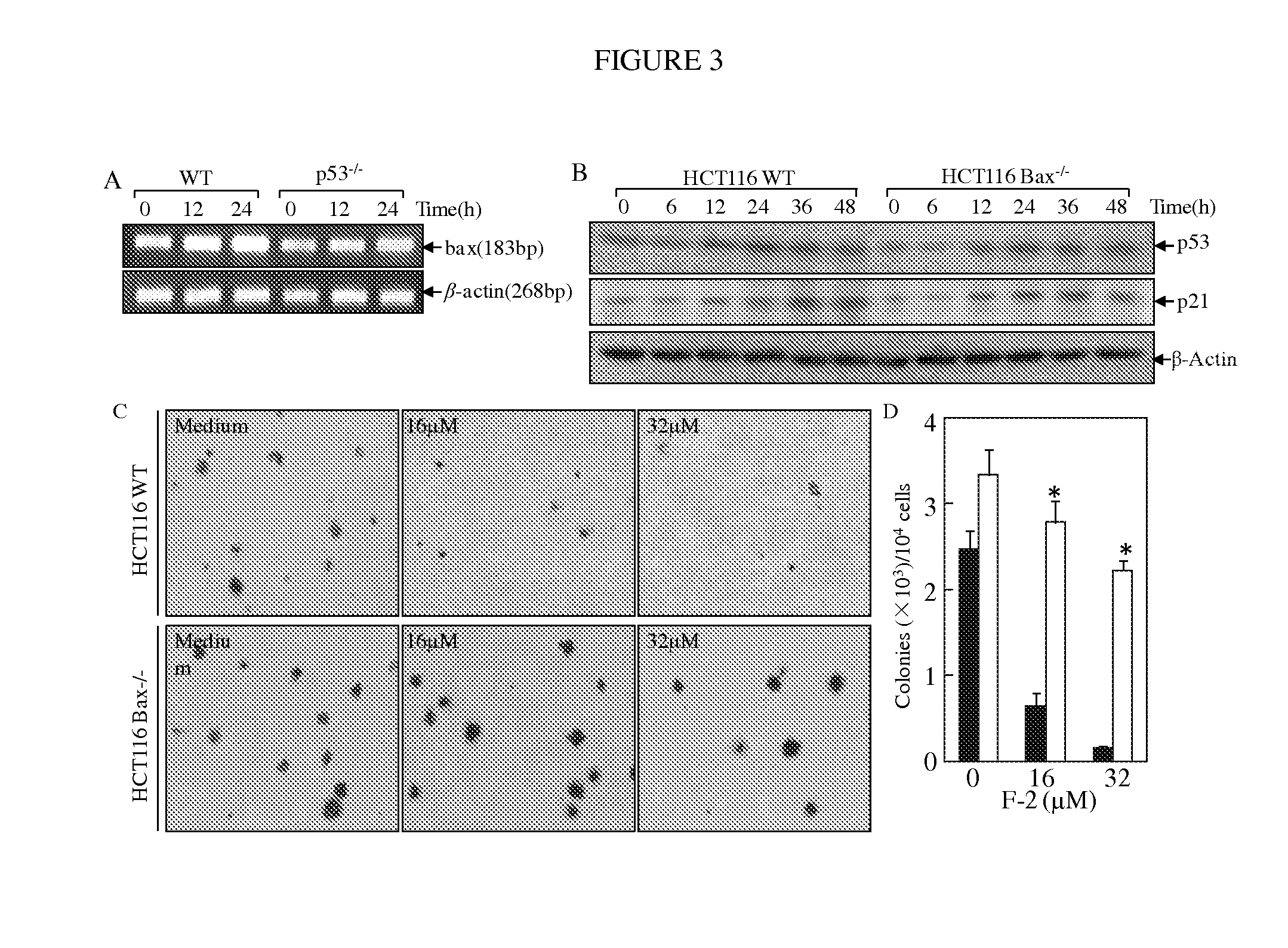Heterocyclo compounds as apoptotic inducers and uses thereof
- Summary
- Abstract
- Description
- Claims
- Application Information
AI Technical Summary
Benefits of technology
Problems solved by technology
Method used
Image
Examples
example c-1
General Method for Preparation of the Compounds of Invention
[0326]The representative 8-fluoro-7-hydroxy compounds of the invention can be prepared using the general synthetic pathway depicted in Scheme 1.
and wherein R1, R4, R5, R6, and n are as described herein.
[0327]The 8-fluoro-7-hydroxy compounds can further used to prepare representative Compounds 2-13 using the synthetic pathway depicted in Scheme 2.
[0328]Using isolation product cheliensisine A as the starting material, the epoxide ring-opening product 2 was first prepared by reacting with BF3OEt2 in DCM (Scheme 1). The fluoride 2 was then used as the substrate for further modifications (Scheme 2). The C-7 alcohol was converted to its acetyl ester 3 by treatment of Ac2O in presence of base. A [3+2] reaction of compound 2 with CH2N2 in ether provided the adduct 4 in moderate yield. Hydrolysis of C-5 acetoxyl group with Et3N in MeOH afforded the diol 5 in good yield. Subsequently, the diol 5 was selectively esterifized with acyl ...
example c-2
[0329]
[0330]Cheliensisin A was isolated from ethanol extract of Announaceae plants Goniothalamus cheliensis Hu in Yunnan province, China.
[0331]Crushed leaves of Goniothalamus cheliensis Hu were leached with ethanol (100 kg). The concentrated extract was separated by silica gel column chromatography. The crude product was achieved from petroleum ether-ethyl acetate (7:3), and separated by medium pressure column chromatography. The crude product was achieved from 70% methanol-water part, and further recrystallized from chloroform to afford Cheliensisin A (300 g).
example c-3
[0332]
[0333]To a solution of Cheliensisin A (548 mg) in dichloromethane (12 mL) was added dropwise a solution of boron trifluoride etherate (202 μL) in dichloromethane under −78° C. nitrogen. The reaction was monitored by TLC. After the completion of the reaction (˜0.5 h), a saturated aqueous sodium bicarbonate solution (6 ml) was added to quench the reaction. The mixture was extracted by dichloromethane (50 mL×3). The combined organic phase was washed with H2O and brine, dried over anhydrous Na2SO4 and concentrated. The resulting crude product was chromatographed on silica gel using petroleum ether / etrol ether (1.5:1) to afford Compound 2 (312 mg, 53%).
[0334]1H-NMR (CDCl3, 300 MHz) δH 7.30-7.34 (m, 5H), 7.03 (dd, J=10.8 Hz, 4.5 Hz, 1H), 6.15 (d, J=10.2 Hz, 1H), 5.36 (t, J=5.4 Hz, 5.4 Hz, 1H), 4.89 (t, J=4.8 Hz, 4.8 Hz, 1H), 5.91 (d, J=45.0 Hz, 1H), 3.96 (d, J=5.4 Hz, 1H), 2.06 (s, 3H); ESI-MS (m / z) 317 [M+Na]+.
PUM
| Property | Measurement | Unit |
|---|---|---|
| Composition | aaaaa | aaaaa |
Abstract
Description
Claims
Application Information
 Login to View More
Login to View More - R&D
- Intellectual Property
- Life Sciences
- Materials
- Tech Scout
- Unparalleled Data Quality
- Higher Quality Content
- 60% Fewer Hallucinations
Browse by: Latest US Patents, China's latest patents, Technical Efficacy Thesaurus, Application Domain, Technology Topic, Popular Technical Reports.
© 2025 PatSnap. All rights reserved.Legal|Privacy policy|Modern Slavery Act Transparency Statement|Sitemap|About US| Contact US: help@patsnap.com



